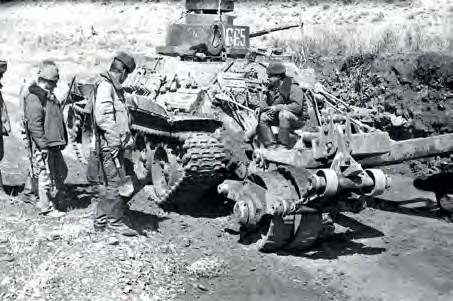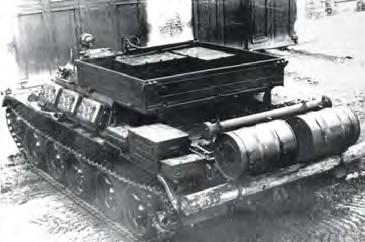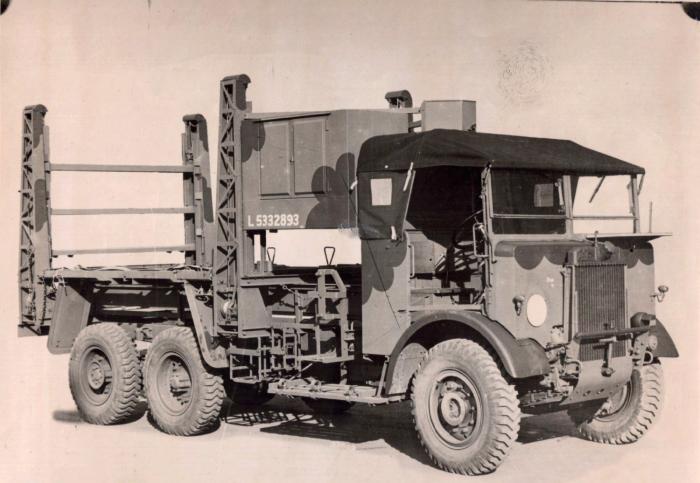The SU-122-54 was one of the most mysterious of all Soviet armoured vehicles fielded during the cold war, James Kinnear finds out more about it
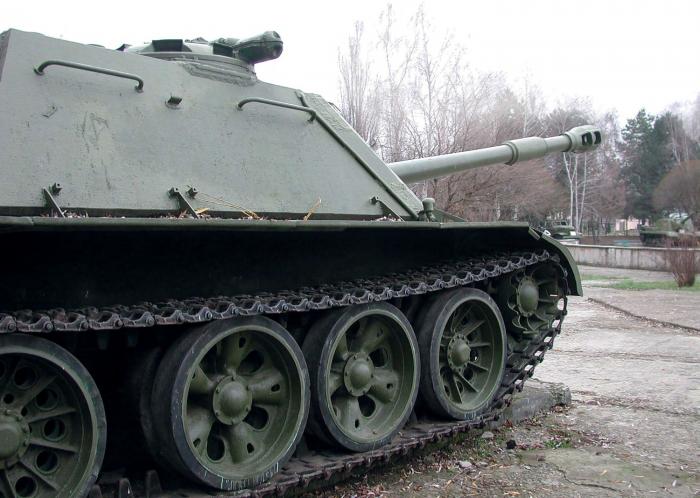
Developed from 1949 as a purpose-designed tank destroyer, the SU-122-54 entered service with the Soviet Army in small numbers.
It was shrouded in secrecy throughout its service life, its existence known in the west only from a single photograph of an apparently bogged down example, with corresponding confusion as to its base chassis, armament, role and tactical deployment. The SU-122-54 remained enigmatic long after the vehicle had been removed from service, with converted ARV versions of the vehicle observed during Red Square parades, their plated-over frontal armour indicating that a gunarmed version had clearly been in service earlier.
Today, the SU-122-54, or the Obiekt-600 (Object-600) as it is also known, is better understood, and two examples of the original gun-armed vehicle have survived and are now in museum collections. The vehicle remains one of the least known, and at the time of its service, least understood, of all post-war Soviet AFVs.
Post-War Soviet Tank Destroyer Development
The SU-122-54 was in concept similar to the wartime SU-85 and SU-100 tank destroyers, developed specifically for the provision of long-range anti-tank support for armoured formations. At the time of its introduction and early years of service in the Soviet Army, the SU-122-54 was known as the SU-122, the SU-122-54 designation having been only latterly applied to the vehicle.
It was developed from 1949 as the Obiekt-600 at the OKB (Independent Design Bureau) of Plant №174 in Omsk, Siberia, under the direction of I S Bushnev, with A E Sulin as the lead design engineer. The development history of the SU-122-54 had begun five years earlier however, in 1944, when the Gorlitsky KB within the Uralmash plant in Sverdlovsk was considering alternatives for the SU-100 as a production replacement for the venerable T-34 based SU-85.

The replacement SU-100 had been developed and was ready for series production, but the ammunition for the SU-100’s 100mm D-10S tank gun, developed from a naval weapon (and at the time a new calibre for tank gun use) was proving problematical both in terms of production quantity and quality.
Several alternative designs were therefore considered, mounting already serving calibre armament, one of which was the SU-122-44, based on the chassis and mechanical components of the new T-44 then being prepared for series production at the liberated and rebuilt Plant №75 (formerly Plant №183) in Kharkov, Ukraine.
Development of the original SU-122-44 design was dropped in December 1944 after completion of the initial concept studies. The T-44 chassis had known technical deficiencies that would also require time to resolve, particularly with regard to reliability of the transmission. In the meantime the situation with ammunition for the SU-100 had been resolved.
The SU-100 therefore entered series production on the proven T-34 chassis, although due to the aforesaid delays with the 100mm armament and its specialised ammunition, the first SU-100 chassis produced were armed with the earlier 85mm D-5S tank gun as the SU-85M. The SU-100 served with the Red Army as a powerful tank destroyer in the final months of the ‘Great Patriotic War’ and into the immediate post-war era, at which time the original SU-122-44 concept was revived, now based on the new T-54 chassis, with the intended service designation SU-122 (SU-122-54).
Being intended as a long-range tank destroyer, the SU-122-54 required significantly more powerful armament than the T-54 medium tank it was developed to support.
The SU-122-54 was thereby armed with the 122mm D-49 tank gun, a modification of the venerable and highly effective 122mm D-25T tank gun then concurrently in service on the IS-2 / IS-3 heavy tanks and the ISU-122 self propelled gun. As with the SU-100, development of the armament ran later than that of the base chassis, work on the armament commencing at Artillery Plant №9 in Sverdlovsk in 1952.
A small series of five 122mm D-49 guns was built at Plant №9 in 1952 for plant testing and state trials, subsequent to which responsibility for limited series manufacture of the weapon was transferred to Plant №221, the ‘Barrikady’ plant located in Stalingrad.
The 122mm D-49 gun featured a strengthened barrel fitted with a double baffle muzzle brake, and ultimately a bore evacuator. This replaced an early experimental compressed air-operated fume extraction system using an AK-150V compressor.
In order to provide the SU-122-54 with long-range accuracy, the SU-122-54 was provided with a stereoscopic rangefinder mounted on the superstructure roof above the commander’s position.
While the 122mm D-49 armament was being developed and tested, the SU-122-54 prototypes were meantime completed at Plant №174 in Omsk, and after successful plant trials, the SU-122-54 was sent for state acceptance trials at the NIIBT polygon at Kubinka, which resulted in the vehicle being accepted for service in the Soviet Army on March 15, 1954.
The SU-122-54 was produced in limited numbers by Plant №174 in Omsk from late 1954 to early 1957. The total number of SU-122-54s built was never understood during the cold war, however only 65 D-49 guns were manufactured at Plant №221 in 1955 and a further 30 in 1956 before production was terminated. So the total number of SU-122-54 tank destroyers built between 1954 and 1957 was always known to have not exceeded 100 vehicles, even in the unlikely event that the five guns produced at Plant №9 for trials purposes were later installed on production vehicles. It is now known that a total of only 77 SU-122-54s were completed, a huge design effort for an extremely low ‘series’ production output, rivalled only perhaps by the pre-war T-35 heavy tank.
The SU-122-54 in Service
At the time of its introduction, the SU-122-54 was intended to provide long-range fire support to tank divisions and motorised rifle divisions equipped with the T-54 series MBT. The planned deployment was one battery of SU-122-54s per motorised rifle regiment. However the SU-122-54 was never produced in anything like the numbers required for the original plan, and the vehicle remained largely developmental throughout its service life.
The armies of NATO countries sometimes referred to the SU-122-54 as the IT-122 (Istrebitel Tank) - tank fighter, 122mm calibre), and indeed the SU-122-54 was by definition an IT vehicle; however in Soviet Army service it was designated SU-122, and latterly SU-122-54.
The SU-122-54 was primarily deployed in Belorussia (today the Republic of Belarus) and Ukraine, though even today, the exact deployment of the SU-122-54 remains unclear.
For more than three decades, all the intelligence services of NATO knew of the SU-122-54 was that it was, or had been, in service with the Soviet Army, but whether operationally or issued to the Soviet Army as an oversized establishment lot for evaluation purposes was also a matter of conjecture.
There was much speculation as to the operational deployment of the SU-122-54 but no hard evidence other than the aforesaid single picture of a bogged-down SU-122-54 being recovered. There were also glimpses of ‘TOP’ ARV conversions in later years, as the converted emergency recovery vehicles were positioned at the entrance to Moscow’s Red Square during annual November 7 military parades.
Only two SU-122-54s have survived to the present day, one located at the Kubinka museum and the other in the city of Krasnodar, but otherwise the vehicle has slipped from the radar screen where it had barely appeared during the cold war.
Description
The SU-122-54 was an advanced design for the 1950s, armed with powerful armament providing long-range accuracy, due in part to the use of a purpose-designed stereoscopic rangefinder. It was well armoured, and had good mobility.
From the mid 1960s however, it became apparent that the standard Br-471B anti-tank round used with the SU-122-54 was incapable of penetrating the hull frontal or turret armour of the American M-60 or the new British Chieftain tank, even at close range. Nor was it capable of penetrating the hull or turret frontal armour of the older American M-48A2 at ranges over 100m, which by late 1960s standards rather defeated the purpose of a long-range tank destroyer.
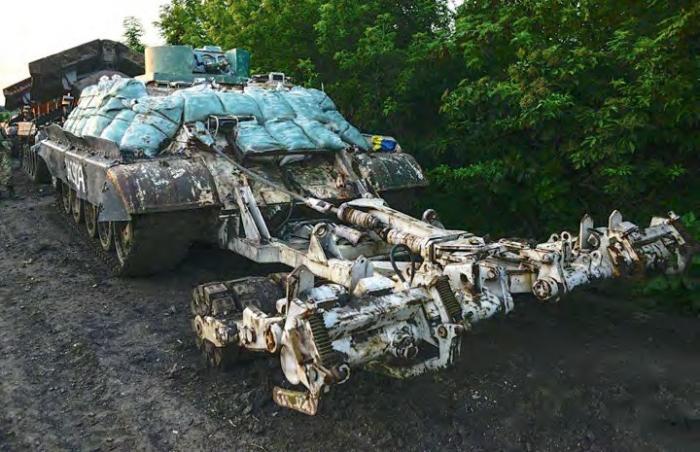
This SU-122-54 preserved in Krasnodar in southern
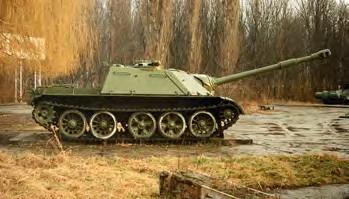
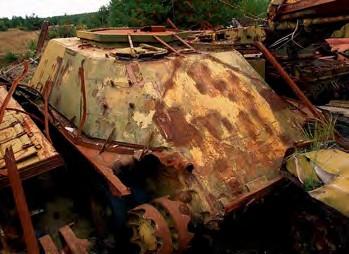
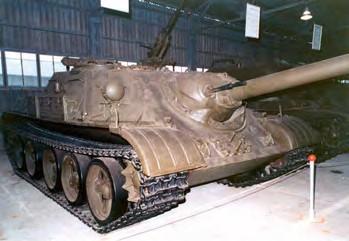
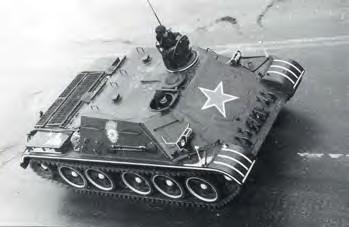
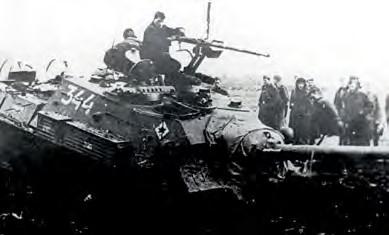
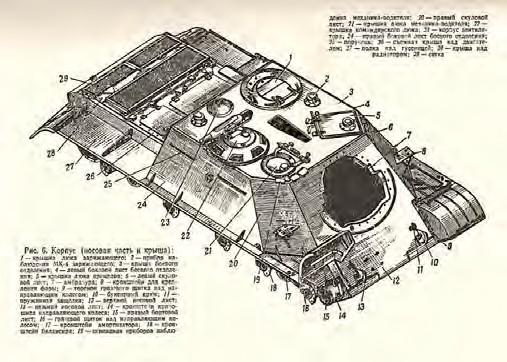
The SU-122-54 was by the end of the 1960s no longer as potent as when introduced only a few years earlier, though the small numbers in service rather negated the overall impact.
To combat the latest NATO tanks, new generations of Soviet tank guns were, by the 1960s, already either in service or under development. The T-62, mounting the smoothbore 115mm U-5TS and firing APFSDS fin-stabilised ammunition had entered service in 1961, while the 125mm D-81 tank gun mounted on the early T-64 MBT represented a generation leap which would provide Soviet MBTs with a viable tank gun for many years to come. The new 115mm and 125mm weapons fired sub-calibre and cumulative rounds, the technology for which was retrospectively applied to the previous generation of 122mm D-25T and D-49 tank guns, prolonging the operational usefulness of the T-10 heavy tank and the SU-122-54. The sub-calibre rounds developed for the 122mm D-49 were still incapable of penetrating the frontal hull armour of the American M-60 and latterly the British Chieftain, but could however defeat the frontal turret armour of both tanks at distances to 2500m.
The new sub-calibre ammunition could also penetrate the M-48A2’s hull frontal armour at 1,000m and the turret front at 2,500m. The cumulative rounds retrospectively provided for the 122mm D-25T and D-49 could penetrate any armour thickness at any distance.
The availability of new ammunition was of limited use for the T-10 heavy tank, which was already being phased out of Category 1 service and replaced by main battle tanks.
However, the SU-122-54 now had a potential prolongation of its useful service life. This was thwarted however by the entry into service of the first generation of Soviet guided anti-tank missiles (ATGM), development work on which had began in the Soviet Union in the mid 1950s. Soviet premier Khrushchev had a fascination with rocket systems of all types, and the associated train of technical development was equally applied to introducing ATGMs (known as PTURs in Russian). This undermined the further development of Soviet long-range tank destroyers armed with conventional gun armament.
Khrushchev in 1956 also demanded that the four main tank design bureaus develop missile armed tanks. These were duly developed by the bureaus with varying degrees of enthusiasm, and clearly in competition with the SU-122-54 which had just entered series production.
The first generation of Soviet anti-tank missile systems began to enter service with the Soviet Army at the beginning of the 1960s, when the 3M6 ‘Schmel’ (Bumblebee) ATGM was introduced as the 2P26, based on an un-armoured GAZ-69 light vehicle. This was rapidly followed by the 2P27, based on the original BRDM armoured car.
ATGMs were more effective than tank guns in the anti-tank over-watch role, and had better armour defeating capability, immediately negating the prime purpose of gun-armed IT vehicles such as the SU-122-54.
Concurrently with the introduction of the 2P26 and 2P27 ATGM vehicles, tank-based ATGM vehicles were developed to prototype stage and field trialled for potential service with the Soviet Army.
In answer to Khrushchev’s demands, three tank plants developed designs to prototype stage.
Most enthusiastic was the Leningrad Kirov Plant in Leningrad, which in 1961 completed development of the Obiekt-282 on the T-10M chassis, later also developing the Obiekt-287 and Obiekt-288 prototypes with Falanga and, later Typhoon ATGM systems.
In 1962, The Independent Design Bureau at the ChTZ tank plant in Chelyabinsk developed the Obiekt-772 on the basis of the T-64 which mounted the Lotus ATGM system, and the Obiekt-775 and Obiekt-780 prototypes firing the ‘Rubin’ ATGM.
Uralvagonzavod at Nizhny Tagil also developed several ATGM armed tank prototypes. A T-55 prototype armed with the ‘Typhoon’ ATGM system was developed over the period 1961-63. This was followed by the IT-1 armed with the ‘Drakon’ ATGM system, development and testing of which was completed in 1968. The IT-1 had a (daylight only) firing range of 300-3,300m and featured sophisticated radio command guidance and an automatic missile reload capability. The vehicle was the only successful tank based ATGM system, being series produced in small numbers during 1968-1970.
The first (and soon thereafter second) generation ATGM systems were available on highly mobile wheeled vehicles. These could operate at some distance from the target in the over-watch role and thereby be protected by concealment and/or mobility. With the very effective anti-tank capability of these ATGMs, tank gun armed tank destroyers such as the SU-122-54 became rapidly obsolete due to the rapid progress of Soviet rocket technology during the 1950s.
As a result, SU-122-54s were removed from service as first line combat vehicles in the mid 1960s. Some were converted in the early 1970s to TOP (Tyagach Obespecheniya Paradov - literally ‘Tractor for Parades’) ARVs. A small number were converted to BMR mine clearing vehicles and served with the Soviet Army in Afghanistan in the 1980s, with some still in service in Ukraine today. All the former SU-122-54 chassis’ seem to have had a second service life, with perhaps none actually dismantled for scrap.
SU-122-54 Modifications:
The SU-122-54 was an amorphous design. It is clear from the small series produced that the overwatch role for which the vehicle was designed was in of itself greatly changed due to the rapid progress of rocket technology. The SU-122-54 underwent capital repair in 1958, after most vehicles had been in service for only two-three years. Modifications included the provision of an R-113 radio station and a TPU-120 laryngaphone system as replacements for the 10RT-26 and TPU-47 respectively.
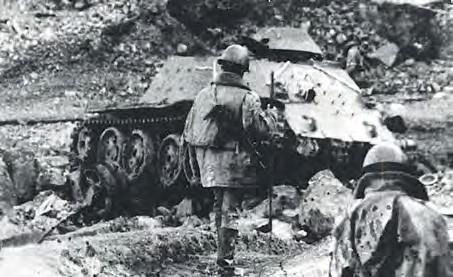



Back in 1952, some three years before the SU-122-54 entered series production, and even as the five trials prototypes of the 122mm D-49 tank gun were being produced at Plant №9 in Sverdlovsk, the OKB at Plant №172 in Perm began work on a more powerful weapon developed for heavy tanks such as the T-10. It was also a potential replacement for the 122mm D-49 on the SU-122-54 and the D-10T on the T-54 series.
The tank and self-propelled gun versions of the new weapon were developed in parallel under the respective designation M-62T and M-62S. Two prototypes of the M-62S were completed in the autumn of 1954, but work on the self-propelled gun version of the weapon was interrupted on August 20, 1953. Work on the 122mm M-62T tank gun version of the weapon continued, the prototype 122mm M-62T being completed in November 1953.
After considerable testing and further development, the modified M-62T2 tank gun entered series production in 1957 as the main armament on the T-10M, the last series production Soviet heavy tank. The main distinctive feature of the 122mm M-62 series tank gun was the use of a multiple baffle muzzle brake.
After a hiatus of one year, work on the 122mm M-62S self propelled gun variant of the weapon recommenced at the end of 1954. An SU-122-54 prototype armed with the 122mm M-62S was presented to GAU (the Chief Artillery Directorate) in September 1955; however the 122mm M-62S armed version of the SU-122-54 was not accepted for series production and did not enter service with the Soviet Army.
For many years there were persistent rumours in the west of the existence of an IT-125 or IT-130 self-propelled gun, based on the same T-54 chassis as the SU-122-54 or that of the T-62. There were such design projects, which contemplated arming the vehicle with the 130mm M-65 tank gun as used on the concurrent Obiekt 277, 278, 279 and Obiekt 770 heavy tank prototypes, and latterly the 125mm D-81T or 2A46-1. These were developed for the T-64/72 during the later years of the SU-122-54’s service life, but no prototypes are known to have been built.
TOP ARV Conversions
SU-122-54 vehicles were converted at TOP armoured recovery vehicles (ARVs) at the tank repair plants at Omsk in Russia and Lvov (now Lviv) in Ukraine. The TOP ARVs were simple conversions intended for emergency towing and pushing operations only. The glacis was plated over where the armament had been removed, but no specialist recovery equipment was fitted.
The TOP vehicles were specifically intended for emergency recovery during highly public military displays broadcast on television worldwide. The possibility of a tank or AFV breaking down during such a parade was clearly unacceptable, and the use of a potentially unreliable worn out gun tank as a recovery vehicle similarly so.
With this in mind, the TOP conversion procedures involved not simply removing the gun and plating over the gun and other embrasures; rather, TOP vehicles were entirely rebuilt, and fitted with a new engine with less than six hours running time. Each vehicle was also given a 50km road test before return to storage pending the next parade event.
TOP vehicles were not used for the performance of other duties in the interim, for which other BTS ARVs were in service, but were retained for one specific purpose.
TOP ARVs were frequently observed during November 7 military parades in Moscow during the 1970s and 1980s, parked by the entrance to Red Square. A small number of SU-122-54 TOP ARV conversions remained in service until well after the dissolution of the Soviet Union, with the Russian and Ukrainian armies. The last public appearance of the SU-122-54 TOP recovery vehicle in the Russian Federation was during the 1995 Victory Parade held in Moscow, subsequent to which the T-72 based BREM-1 took over the role.

BMR-1 Mine-clearing Vehicle
It would appear that a significant number of SU-122-54s were later modified as specialised mine clearing vehicles, designated BMR or latterly BMR-1. The BMR (Bronirovannaya Mashina Razminirovaniya - armoured mine-clearing vehicle) consisted of a disarmed SU-122-54 or TOP vehicle fitted with mine rollers. The BMR was first observed in use with Soviet forces in Afghanistan during the 1980s. There was a high level of field modification in their later deployment, with many vehicles being fitted with a BTR-60PB turret complete with 14.5mm KPVT armament on the turret roof, with additional stand-off protection armour fitted around the turret.
The BMR vehicles were subsequently used by the post-Soviet Russian and Ukrainian armies, and with UN deployments in Africa. The BMR-1 is still in service with the Ukrainian Army and was used during and after the 2014 war in Ukraine.
The designation was changed from BMR to BMR-1 in order to differentiate the vehicle from the almost identical BMR-2, which entered service during the 1980s, and also had its combat debut in Afghanistan, but which was based on the T-54B MBT chassis with a standard T-54 series wheel spacing arrangement.
SU-122-54 description
The SU-122-54 was based on the T-54A main battle tank and its mechanical components, but with a reconfigured road wheel layout, with the front three wheel stations being spaced to better distribute the weight of the forward mounted casemate fighting compartment and armament. Due to its modified road wheel configuration, the SU-122-54 was for many years misidentified in western intelligence reports as being based on the T-62 chassis.
The hull and casemate superstructure was produced from rolled armoured plate and was of welded construction throughout. The armour was well sloped, with the single piece frontal glacis and casemate superstructure heavily interlocked armour plate angled at 51degrees. The superstructure sides were also steeply sloped, with the casemate rear also set at an angle.
The SU-122-54 had a combined driver-mechanic and fighting compartment, with a bulkhead separating the fighting compartment from the rear engine and transmission (MTO) compartment.
The SU-122-54 had a classic self-propelled gun crew configuration, with the commander, gunner and two loaders also being located in the fighting compartment. The SU-122-54 had a total crew of five. The driving-mechanic’s position on the SU-122-54 was unusual, as he was seated high up on the right side of the vehicle. There was no hatch to open in the glacis armour giving natural vision and the driver thereby relied on two forward facing and one side facing episcopes to manoeuvre the vehicle.
As the SU-122-54 was intended for long-range fire support, the driver’s relatively blind driving position was not considered a major detriment.
The internal construction of the 122mm D-49 barrel, the ballistic properties and ammunition types available for the SU-122-54 were as for the D-25T tank gun as fitted to the IS-2 / IS-3 heavy tanks and the ISU-122 self propelled gun, but with a longer calibre length and strengthened barrel.
The separate loading ammunition was time consuming to load but still less cumbersome in a confined space than for-instance the 100mm ammunition used on the SU-100. The SU-122-54 was provided with an electro-mechanical rammer, which gave the vehicle a for the time significant rate of fire of five-six rounds per minute. On early examples of the SU-122 a compressed air system was used to extract fumes from the barrel after firing; this was modified to a conventional barrel mounted fume extractor on later models. The front mounted D-49 armament was protected by a cast mantlet sometimes fitted with a canvas shroud.
The vehicle was provided with a specially developed TSh2-24 telescopic sight for direct fire to a theoretical range of 6,000 metres and an S-71-24 / S-72-24 mechanical sight with panoramic view for indirect artillery fire from a closed down position to a maximum range of 13,400/14000m should the need have ever occurred.
The commanders’ cupola was fitted with a TKD-09 stereoscopic rangefinder. Gun traverse was 16 degrees (which though limited was not such a disadvantage considering the vehicle’s intended long range anti-tank role) elevation was approximately 16 degrees and gun depression - 4 degrees, which gave the vehicle reasonable anti-tank capability on reverse slopes and in when dug-in.
The co-axial 14.5mm KPVT machine gun was fitted with an automatic reloading system, while a 14.5mm KPVT anti-aircraft machine gun was mounted over the loader’s hatch, with a total 600-round ammunition complement provided for the secondary weapons.
The SU-122-54 initially used same ammunition as the 122mm D-25T, including the OF-471 HE-Frag, Br-471 and latterly the Br-471B anti-tank rounds, with a 35-round ammunition complement.
In addition to anti-tank rounds intended for the close fire support role, the 122mm D-49 could fire howitzer ammunition from the 122mm M-30 and D-30 towed weapons. The Br-471 armour-piercing round could penetrate 130mm of vertical armour at 1000m, and 100mm at 2000m, the later Br-471B round could penetrate 145mm and 125mm respectively, with 25mm less armour penetration where the armour slope was 60°. The SU-122-54 was sighted to 3000m, but in Europe the undulating and forested terrain would have negated the SU-122-54s long-range effectiveness.
The SU-122-54 was not exceptionally armoured, reflecting its long-range stand-off role, however the frontal armour basis was a heavily sloped 100mm with 80mm on the superstructure sides, so it was more than adequately protected for a tank destroyer based on a medium tank chassis.
The SU-122-54 was powered by a standard V-12 model V-54 diesel engine from the T-54, developing 520bhp at 2000rpm, coupled to a five-speed gearbox and planetary transmission. With a combat weight of 36.4 metric tonnes, the SU-122-54 could travel at a maximum road speed of 48km/hour, with a significant range of 400km.
Surviving SU-122-54s
Only two SU-122-54s survive today in museums. An original development prototype in pristine condition is located at the NIIBT museum at Kubinka, near Moscow. The other is located in Krasnodar in southern Russia, forming part of an open-air collection outside the recently constructed Museum of Military Glory, located in a military themed park not far from the city centre which also contains aircraft and even a full sized submarine parked on the shoreline.

